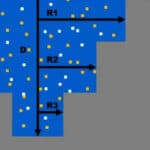This podcast segment is extracted from the opening of a webinar held in June 2019, with Dr Jon Belkowitz of Intelligent Concrete. The webinar was titled Steel Corrosion in Concrete. This extract looks closely at the science of colloidal silica hydrogels. Ultimately, why do we care about this? Is there a way that we can use this technology to make our structures stronger and last longer? How can we protect steel from the wrong sort of corrosion, and create a tougher matrix in the concrete?
Steel Corrosion in Concrete – Part 2

Invisible Strength
Steel Corrosion in Concrete - Part 2
/
RSS Feed
Steel Corrosion in Concrete – Part 2
Dr Jon Belkowitz PhD. PE. – LinkedIn linkedin.com/in/jon-belkowitz-phd-pe-53494719
Intelligent Concrete intelligent-concrete.com
The full webinar https://youtu.be/Je25pnSZBT0
Brian H Green’s presentation referred to in this segment ndia.dtic.mil/2005/2005triservice.html#eight
View the Transcript
NARRATOR: G’day everybody, and welcome back to another segment from MARKHAM’s Invisible Strength podcast series. This is the second segment extracted from a webinar held in June 2019, with Dr Jon Belkowitz of Intelligent Concrete. The webinar was titled Steel Corrosion in Concrete. This segment shares the key science of how colloidal silica works in concrete, why we care about this, and how it can make concrete stronger and last longer. Dr Jon does refer to a slide deck of diagrams, but his key arguments are not illustrated. You can find the YouTube link to the hour-long webinar, in full with all the visual tools, in the notes on our podcast page. Enjoy!
. . . . .
JON: So this is one of those technologies. This is the “RealCrete”. When we talk about colloidal silica hydrogels, this is what it looks like when it comes out of the bucket, or comes out of the system, onto the slab where it’s being used. But I want you to remember, we’re going to take a scientific approach, and I want you to understand the basic science of it. One of the most important pieces of this technology is the fact that it has a universal dispersion of nanosilica particles; particles that are 1–100 nanometres. This is a molecular model of one of those particles, as basically a whole bunch of silica rolled up into what looks like a meatball.
Now, what’s great about these nanosilica particles, is that on many levels, they enhance the concrete. The first thing that they do is, just like any other reactive silica-based material, they are going to combine with calcium hydroxide within the concrete to create more of that backbone of concrete strength, that Calcium-Silicate-Hydrate. What that’s going to do is reduce the permeability of our hydrated cement matrix, that backbone of concrete strength, through particle-to-particle packing and void filling. Ultimately, what we see out of this colloidal silica and calcium hydroxide combination is an environment within our concrete that is not as conducive to chemical or physical attack.
So whenever any of us are on any job site – I don’t care if we’re working on bridge decks, on columns, on beams, precast, in-situ – this is what we want our concrete to look like. Now, whether your concrete is 24 hours old or 24 years old, the inevitable reality is that our concrete starts looking like this. Instead of creamy and dreamy and closed up surface, we lose that first line of defence to a cracked-up structure that allows moisture migration and other deleterious materials from the surface into the subsurface, and then into the body of the concrete, that ultimately leads to our reinforcing steel and other things.
Now, within that cracked structure, we have these pores. While this is a rudimentary identification of these pores, we have to recognise that all pores look the same, where they have a bigger radius up top and a smaller radius as we go deeper into the pore. Normally, those pores are either filled with a certain amount of water, either saturated or all the way down to dry; there’s many varieties that could be half-filled, three-quarter filled, water up on the side. But ultimately, what we have within these pores, when they’re filled with water is: these alkalis, these hydroxides, these sulphates, and these chlorides. We have things that can help concrete and things that can hurt concrete.
Now, when we don’t have water in our pores, in our dry pores, we either have those alkalis, hydroxide, sulphites, and chlorides dried up on the sides or within the pores. Or according to some experts, the chlorides, let’s say, or even the hydroxides can wash out of concrete. But ultimately, if we put our concrete under the microscope, this is what we can see: a nice pore structure. That’s actually the calcium hydroxide plates. So that’s the plates of calcium hydroxide that are going to combine with the nanosilica particles to create more of that Calcium-Silicate-Hydrate, and this is some of those hydroxides that can be found within a pore. So this is a really high magnification.
Now let’s take a lower magnification, so bird’s eye view. Still under the microscope, we have these pores throughout our hydrated cement matrix. So throughout the grey stuff that makes up the backbone of concrete strength – you might not be able to see all of them, but throughout it – normally you’re going to have pores just from the hydration process, those capillaries. But once we start going through desiccation, once we go through volume changes, wetting and drying cycle, you’re going to start creating cracks, which ultimately make more pores. This, on the operational world, is what it leads to.
Let’s go back to the rudimentary drawing for a second. In this rudimentary structure, we’re looking at a cross-section of our previous slide. You’ve got cracks all over the surface. Not only do we have pores at the surface, but we have pores that go from the surface to the subsurface and body of the concrete. What we want to do with this when we use colloidal silica hydrogel is, put it through a certain prep work. Normally, this is what your slab is going to look like with no prep work. But with the prep work that we do for colloidal silica hydrogels, we are going to saturate the slab; not puddle it, not pool it. But get a surface-saturated dry condition where we know that there’s some water that has migrated, not only through the surface, but subsurface and then the body of our concrete.
After that point, that’s when we apply our colloidal silica hydrogel. So this is what the “RealCrete” looks like. This rudimentary drawing, is as we spray that technology onto the surface, it starts combining not only with the hydroxide and the alkalis, but that chemical reaction that happens with the catalysed nanosilica, it actually draws it deeper and deeper into the pore structure at the surface of the concrete.
Because we’re talking about a hydrogel here, once we get that saturation of that colloidal silica hydrogel, there’s a combination with the alkalis, the hydroxides, so on and so forth, and that catalysed colloidal silica hydrogel starts gelling up itself. When I say “gelling up,” it starts creating these three-dimensional networks of colloidal silica or nanosilica structures that not only hold on to water, but because they have calcium hydroxides and silica, they start within these hydrogels. This is what one of those hydrogels looks like outside of the concrete. It not only creates those hydrogels, but it also starts creating more of that backbone of concrete strength.
Now remember, it’s what we discussed before. It’s that combination of silica from our nanosilica and combination of calcium hydroxide, for pozzolanic reaction to create more of that backbone of concrete strength. Then as time progresses, we go from a hydrogel all the way to this Calcium-Silicate-Hydrate, to create from a sealing effect to a healing effect. Now, with some of the hydrogels that we’ve been able to create at the lab, we’ve been able to go from a liquid state to combining it with the cement pour solution and gaining somewhere between 40–50 MPa within 30 days.
So ultimately, why do we care about this? Is there a way that we can use this technology to make our structures stronger and last longer? When it comes down to it, a lot of our concrete structures that need the most support are the ones that have been in place for 10–20 years. A lot of these structures, whether they’re marine environments or car parks, they’re not easy to replace.
The last time I was in Sydney, Australia, I spoke to 10–15 municipalities, or government agencies to include municipalities. The consistent thing that I heard is that year after year, the municipalities and government agencies have been short their maintenance budget by 10–30%. When I asked them how much money did they have to build new structures, nine out of 10 times I got a laugh, more like a chortle, as an answer instead of an answer.
The harsh reality is that there isn’t a lot of money going out there to build new structures, because we are spending so much money repairing and replacing existing structures that are either too big to take out of place, or we’re just using them too much to take them out of service to repair them or replace them.
So the question is, what are we getting out of this combination? But as I said before, what I want you to focus on is two things. One: not all steel corrosion is bad. We do want an initial amount of steel corrosion, because that corrosion creates a protective layer over the steel to make that steel last longer. If that protective layer didn’t get created, and the steel keeps falling off for some reason, we’re going to deteriorate more and more and more of the steel.
Then, remember that steel is constantly under load. So if we reduce that cross-sectional area of that steel, as it’s called in the reinforcing steel equations, we create an environment for something called a compression failure or a compressive area failure, where it’s more catastrophic. Instead of this tensile failure, tension failure, or at least a transition failure. With those two types of failures, we see this running room or this failure before failure occurs. As opposed to the compression failure or the compression zone, where we get this catastrophic failure, where our steel structure just falls apart almost instantaneously. So again, protecting the passivation layer, so that that steel doesn’t corrode more and more and more, is the key element.
That’s the second piece of it. Despite the fact that there’s number one: the good corrosion, we want to stop number two: the bad corrosion. So by using the colloidal silica hydrogel, we’re going to do that in four different ways. The first way is, we have this obstacle, this cracking, this permeability that’s been created, and then the water and hydroxides within that pore structure or those capillaries. So what we do with that is we use that obstacle, and we turn it into an opportunity.
That opportunity, first and foremost, because we’re talking about colloidal silica, it’s the first set of words in our technology here, so we have to mention it. We have silica from the colloidal silica, which is in an amorphous state. Brian Green from the Army Corps of Engineers called it an Ultra-Fine Amorphous Colloidal Silica. There are a tonne of papers out there on the combination of nanosilica with concrete, and that pozzolanic reaction to create more of that phase development of the superhero. Let me say that again, more of the phase development of the superhero of concrete strength: that Calcium-Silicate-Hydrate (CSH).
Now, what this does, specifically with the technology that we’re using, is it creates a tougher matrix. That’s a very specific word; I’m not using that word lightly. I’m not just saying stronger, or I could say stronger and tougher matrix. So it’s a matrix that’s not only going to have a greater compressive strength to it, but it’s a matrix that’s going to have more resiliency to some of the secondary loads that are created from our steel corrosion. Because, again, if steel corrosion occurred over and over again, and it didn’t create any residual stresses on the hydrated cement matrix, we couldn’t care less. It wouldn’t be a problem.
But the harsh reality is that when that steel corrodes, it not only deteriorates the area of steel that we rely on for tensile and shear loads, but it also increases in volume. That increase in volume causes residual stresses on the surrounding hydrated cement matrix, creating tensile and shear loads that overcome the strength of the hydrated cement matrix. So by increasing the phase development – by increasing the amount of the superhero of concrete strength, especially in the way that we’re doing it – we’re making that glue, that superhero of concrete strength, more resilient to the after-effects if that steel is going to continue to corrode.
Now, the second piece of it is decreasing permeability. This goes hand in hand with all types. I don’t care if we’re talking about steel corrosion, or alkali-silica reactivity, or sulphide attack. If we can reduce the permeability through particle-to-particle packing – if we can take that obstacle, that cracked up structure, and turn it into a structure that is more resilient, to not only more cracking, but then that third thing, that water migration – you’re going to create a structure that is going to be stronger and last longer.
Because anything we talk about, that list that I gave you, all those chemical failure mechanisms rely on two things: water migration, and normally, it’s the deleterious material that comes with that water migration. So it’s either chlorides, more sulphates, or alkalis. So if we can reduce the permeability through particle-to-particle packing, this phase development, we can effectively manipulate the molecular kinetics of that cementitious and pozzolanic hydration to reduce the pore structure within our hydrated cementitious major matrix, which is basically a hardened sponge, to reduce the water migration: to the steel, to the aggregate, or to whatever.
But not only do we do that, there’s that third piece of it, that reduction of water migration. The reason why I like this slide is because it shows not only the Calcium-Silicate-Hydrate development, but it also shows this hydrogel development. It is that hydrogel that we get first. So when you see that reaction – I’ve seen it on the surface of the concrete, and I’ve seen it go subsurface – you can actually see some of the gel forming. Now what you get from that, I don’t want to call it instantaneously, but the first thing that you get out of it is not a healing effect, it’s a sealing effect. The difference between sealing and healing is that in sealing, the material that gets in towards pore structure doesn’t necessarily have to be equal to or greater than the parent material in the hydrates in that matrix. Once we go to that healing effect, we actually have material that is equal to or greater than the parent material outside of that crack or pore structure.
So reducing water migration, we get that from the hydrogel, and what we initially see from our hydrogel is that it becomes a superhighway for chloride ion transport. But as we start going through this phase development, we start changing up something called the tortuosity: the ability of that superhighway to let things transport freely through it. So at first, it might have been a superhighway. But now as the Calcium-Silicate-Hydrates develop, we start putting barriers within that superhighway to stop that ion transport. We start locking up not only those alkalis, the sulphates, and those chlorides so that they cannot migrate as freely into the steel. But we also start consuming some of that calcium hydroxide to create that backbone of concrete strength. Ultimately, what this all leads to is a reduction in moisture or water migration.
Now again, the reason why we care about all of this is because we want to protect that protective layer on the steel. That’s it! We’re going to do that through all these other things that we just talked about for all the science that we talked about, but that is our ultimate objective. That number four item in red: I want to protect the layer that is protecting my steel. If I can protect that passivation layer – if I can stop that passivation layer from getting carbonic acid to it, if I can protect it from cracks migrating to it or more moisture migrating to it, or aerated water and oxygen – then I can stop that passivation layer from going through de-passivation or breaking down, where it then has to go through the process again. Once we break down that layer of corrosion over the steel, it has to be created again, especially if we have moisture, aerated water, and chlorides or salts.
. . . . .
NARRATOR: So that’s it for today, keep an eye on our Invisible Strength media site for more segments to come!
Want to Contribute?
Feedback on our podcasts? Suggestions for future topics? Looking for more information on topics we’ve discussed? Send us a message – we’ll be in touch within a day or two.
More about MARKHAM
MARKHAM are dedicated to providing innovations for concrete and construction. Focusing on concrete waterproofing solutions, penetrating concrete sealers and durability treatments for concrete.
Podcast Categories
Latest Episodes

Doug & Laike Share Their Week – Western Australia, Christchurch, and a Focus on Low Carbon Concrete
Laike and Doug wrap up their week again with a 10-minute chat. They’ve each been

Doug & Henry Share Their Week – R&D, Melbourne Traffic, Basement Waterproofing, And ‘CONQOR Your Health’
It’s Henry’s turn to join Doug in the podcast studio – in person this time!

Doug & Laike Share Their Week – Seychelles, Readymix Plants, And A Bike Ride
Once again Doug and Laike sit down for a 10 minute recap from the week.
invisible strength podcast
The whole MARKHAM team is pleased to present you with our podcast series, INVISIBLE STRENGTH. In this series of interviews, we’ll walk through the science and challenges of concrete durability, what goes wrong in the field – and the advanced methods available to restore and enhance service life to concrete construction.
INVISIBLE STRENGTH reflects a number of factors in concrete construction and durability. When things go wrong, the evidence can become very visible indeed. However, when all is going well, there’s nothing particular to be seen!
MARKHAM’s concrete treatments, too, are invisible once completed – and the result is the long internal, invisible durability of the concrete.
So join us as we explore the unseen world inside concrete – why it matters, and how it can be protected!
